Mobile Suit Gundam: Iron-Blooded Orphans – Part 1 Review
With over thirty-five years of Gundam history resting on its shoulders, Mobile Suit Gundam: Iron-Blooded Orphans definitely knows where it comes from and follows on the heels of its pedigree, yet I don’t think you could find another series that for at least a quarter of its run-time feels like a completely different show. Prolific scriptwriter Mari Okada takes the helm alongside director Tatsuyuki Nagai to produce their own unique take on the franchise that is extremely dark, profusely political, and brutally bloody.
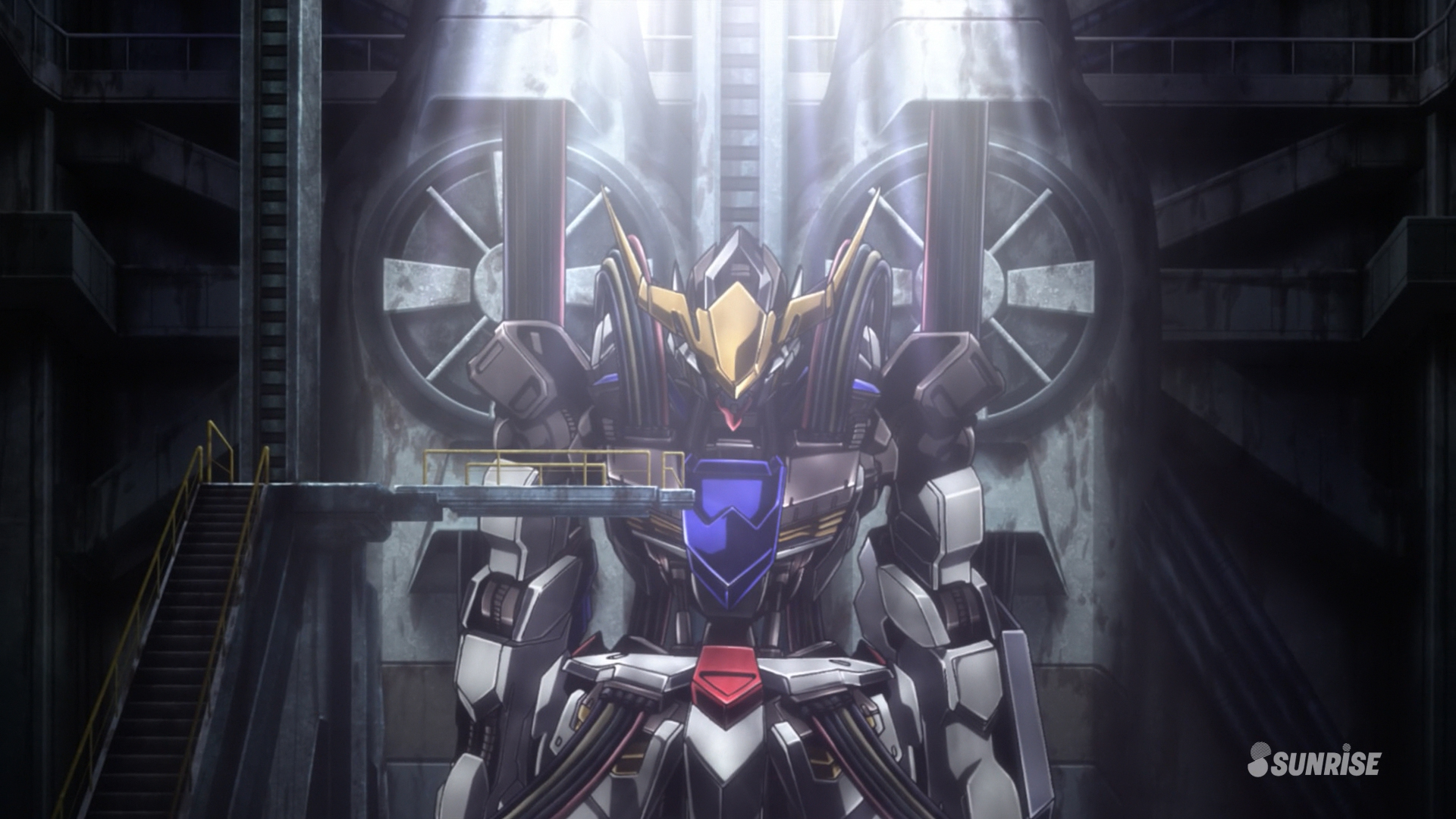
In the not so far-flung future, humanity has reached out into space and begun to colonise the rest of the Solar System, establishing both stand-alone colonies and taking over planets such as Mars and Jupiter. However, war eventually breaks out between Earth and those who live in the colonies that pushes humanity to the brink of extinction. This so-called Calamity War is only ended when a group of seven families group together to form the peace-keeping organisation known as Gjallarhorn, who develop a series of 77 powerful mobile suits known as the Gundam Frames, that are piloted by those who have been augmented with the Alaya-Vijnana system, which turns a pilot’s brain into the Gundam’s processor.
300 years later, humanity stands on the brink of another conflict as tensions begin to erupt between the corrupt and self-serving Earth governments and the impoverished, third-world colonies of the Outer Spheres. Emerging as the figurehead of the Martian independence movement, Kudelia Aina Bernstein enlists Chryse Guard Security (CGS), a private military company employing mostly orphaned children as soldiers, to escort her to Earth to argue for independence and pursue the de-regulation of the precious resource half-metal. However, when this becomes known to Gjallarhorn, they sweep in to destroy CGS and nip the Martian independence movement in the bud.
Facing off against them is CGS’ Third Army Division which. under the leadership of Orga Itsuka, manages to repel the attack by using the power of one of the lost Gundam Frames, Barbatos, piloted by Orga’s best friend, Mikazuki Augus. Using the confusion of the attack, Orga launches an uprising against the corrupt adult commanders of CGS and takes it over as his own company, Tekkadan. Knowing that they now need to re-establish themselves and earn some money, Orga decides to accept Kudelia’s request as their first job, setting out for Earth, with Gjallarhorn, who are determined to seize Kudelia, in hot pursuit.

Iron-Blooded Orphans, as Okada’s vision of Gundam, is a gritty war drama about a bunch of orphaned kids trying to carve a place out for themselves in a very hostile world. It is both similar and different in its approach to other entries in the franchise as, while it incorporates a lot of common elements (with the technology and political landscape feeling very similar to 00, and the initial setup feeling like it is what the opening of ZZ should have been if it hadn’t had that massive comedic tonal shift) it initially focuses on the drama and political dilemmas facing the cast of characters, rather than going all-in on the action.
That’s not to say there isn’t any impactful action here with the opening being very strong in that regard, but it quickly settles down into a slower pace as it has to build up the world and political backdrop, as well as introduce the other major factions in the story, such as Teiwaz, a mafia-style group influential in the Outer Sphere underworld, and the Turbines, a private military company led by Naze Turbine, which operates under it.
This is where it feels like a completely different show compared to a traditional Gundam series, as while it does have all of the trims and trappings, the worldbuilding and dramatisation is so much more nuanced and placed into the spotlight, that you forget you’re watching a mecha show at all.
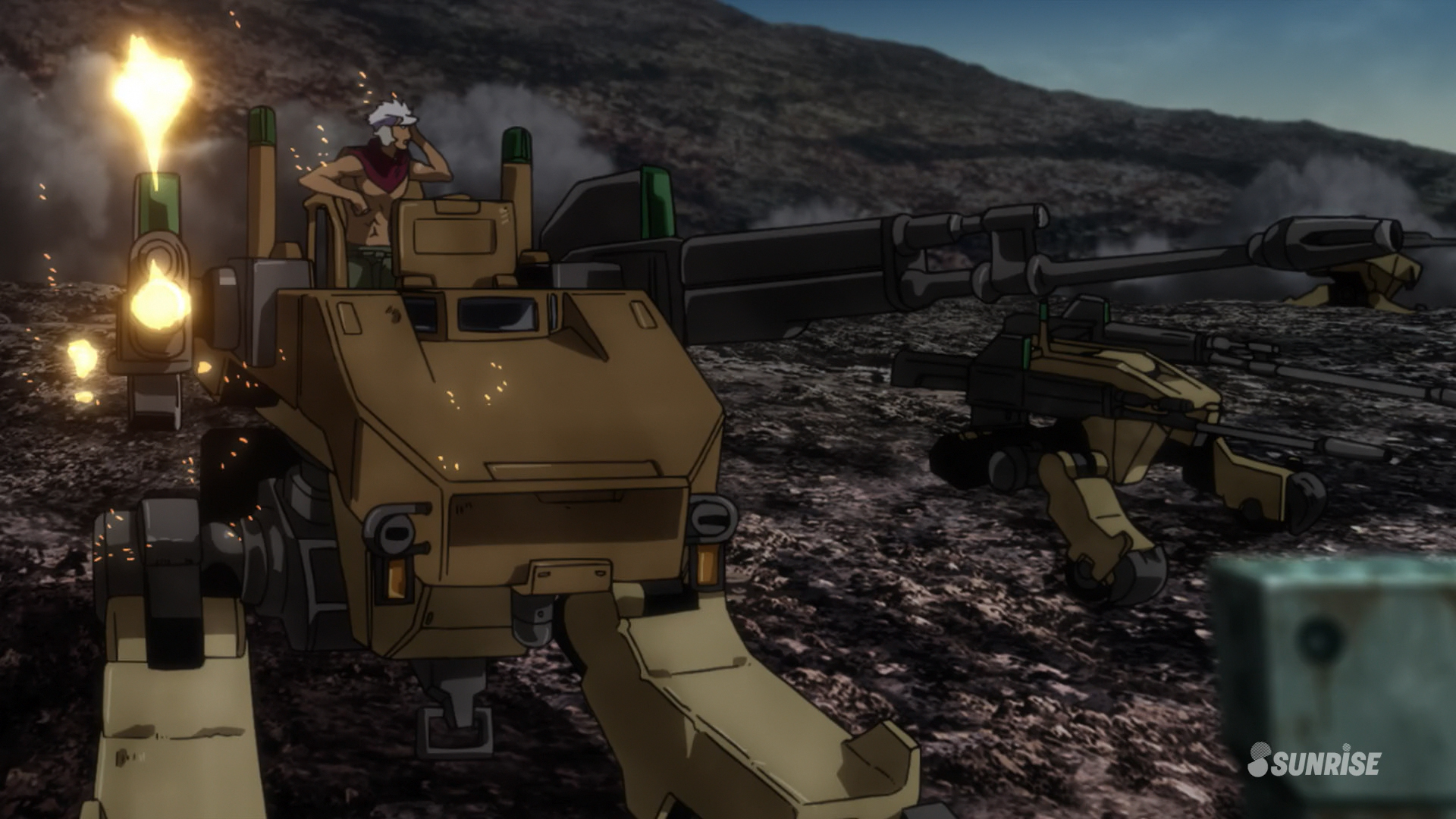
Okada brings in her own worldview and tilts the axis to create a grounded world that seems very realistic. You get to feel the full scope of the setting and how the political landscape is affecting every part of society, from the use of child soldiers, to cries for independence and political uprisings, as it perhaps seeks to present a vision of how hard it is to survive out in space or on another planet, while interweaving these very present, real-world political issues. These have been tackled in other Gundam series, yet here they feel a lot more personal, what with the focus being on how they affect our central cast of characters and how they deal with being put into a very bad situation.
Meanwhile, themes common among Okada’s other works also come to the fore, particularly in looking at the family and the different forms it can take with both Tekkadan and the Turbines showing very non-traditional family structures – the former being a group of friends and the latter being one guy with a massive harem.
Whether you like all of this will depend on your own views of Okada’s scriptwriting, as while she is highly regarded, she isn’t without her flaws. While the deep, political plot is easy to appreciate for its intricacies, the early pacing is a bit too slow for my liking. Some of the early episodes are completely dedicated to character development and I feel that they could have been cut shorter in order to speed the plot along a bit more, even if they are great for fleshing out a very strong cast of characters.
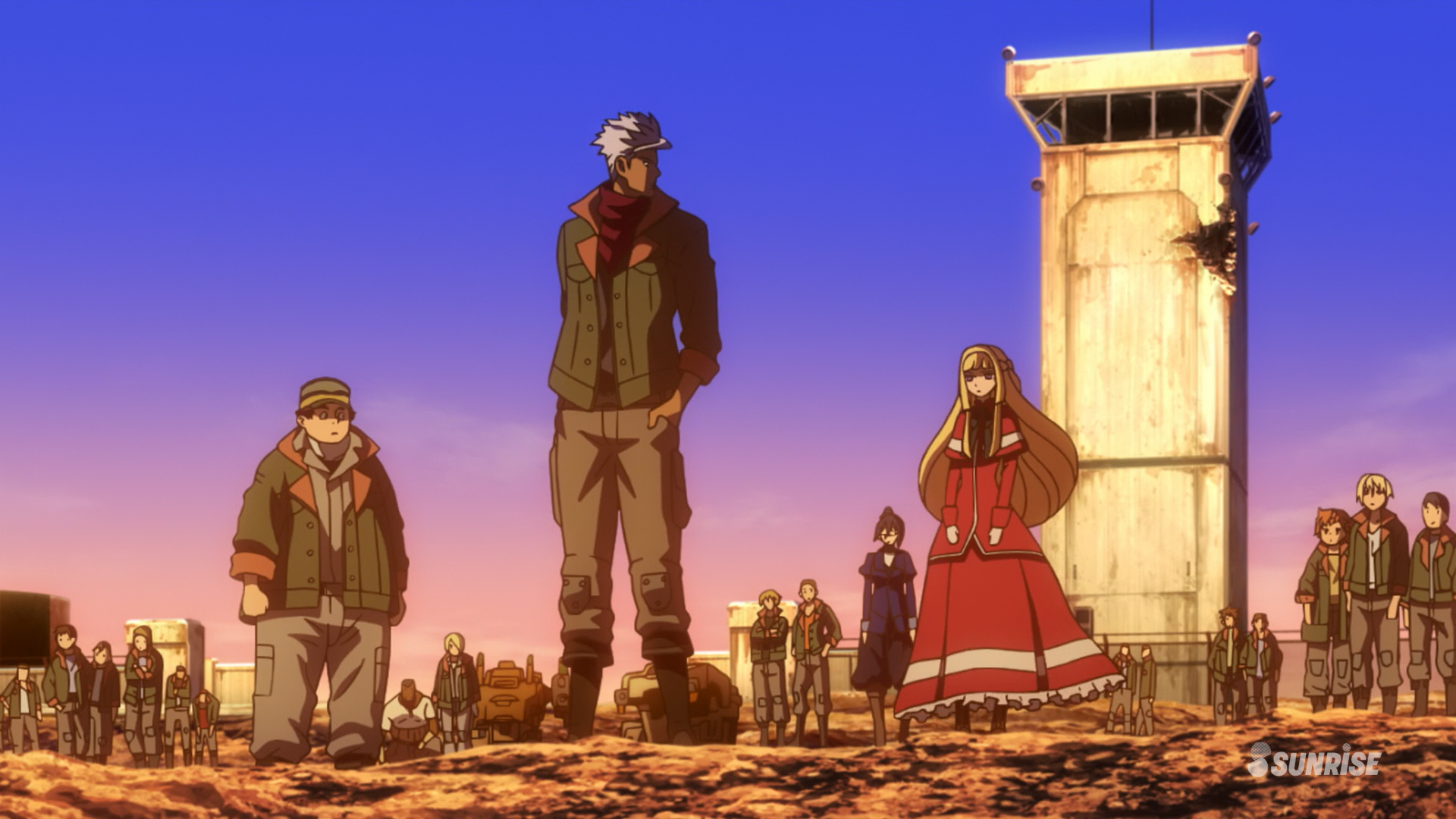
Our heroes, while being quite a large group, are a really solid bunch. From the likes of the gruff and tank-like Akihiro, and the lovable Biscuit and his two superbly named sisters Cookie and Cracker, to Kudelia and her attached caretaker Fumitan, they all have their good points and bad points which offer a lot to the story, and even though not everyone gets significant development arcs, the series does well to balance some of these key side characters against its central protagonists, Mikazuki and Orga.
These two are difficult to talk about separately as they tend to go hand-in-hand, but I have to say that I found Tekkadan’s leader to be a much more compelling character than his childhood friend. Orga shows himself to be a charismatic and authoritative leader who’s not afraid to make big, bold decisions; all the while taking the welfare of his comrades into account. As such he’s very much the cornerstone of the story as, while it’s about Tekkadan as a whole, it also feels very much like Orga’s personal journey, covering both his successes and his failures.
Meanwhile, Mikazuki, despite being quite kind and protective of his friends, comes across as rather dense and is often reduced to simply being Tekkadan’s attack dog. While this may be the entire point of how his character develops, it just doesn’t make him likable in any way, making this another Gundam series that doesn’t do its protagonist justice. He’s certainly not a jerk and not quite as stoic as some of the franchise’s other heroes, yet he’s still extremely frustrating to watch in the way he interacts with the other characters. This bites particularly hard when the series tries to tangle him up in multiple romances, with one of them coming off as a forced “love at first sight” encounter, which tries to hook the two characters up, despite it being difficult to understand what this particular character finds attractive about him. It would have been better to build things up to a point slowly in that regard as, while the love triangle it is trying to set up still has the potential in making its point later on, it does feel a lot shallower than it should.
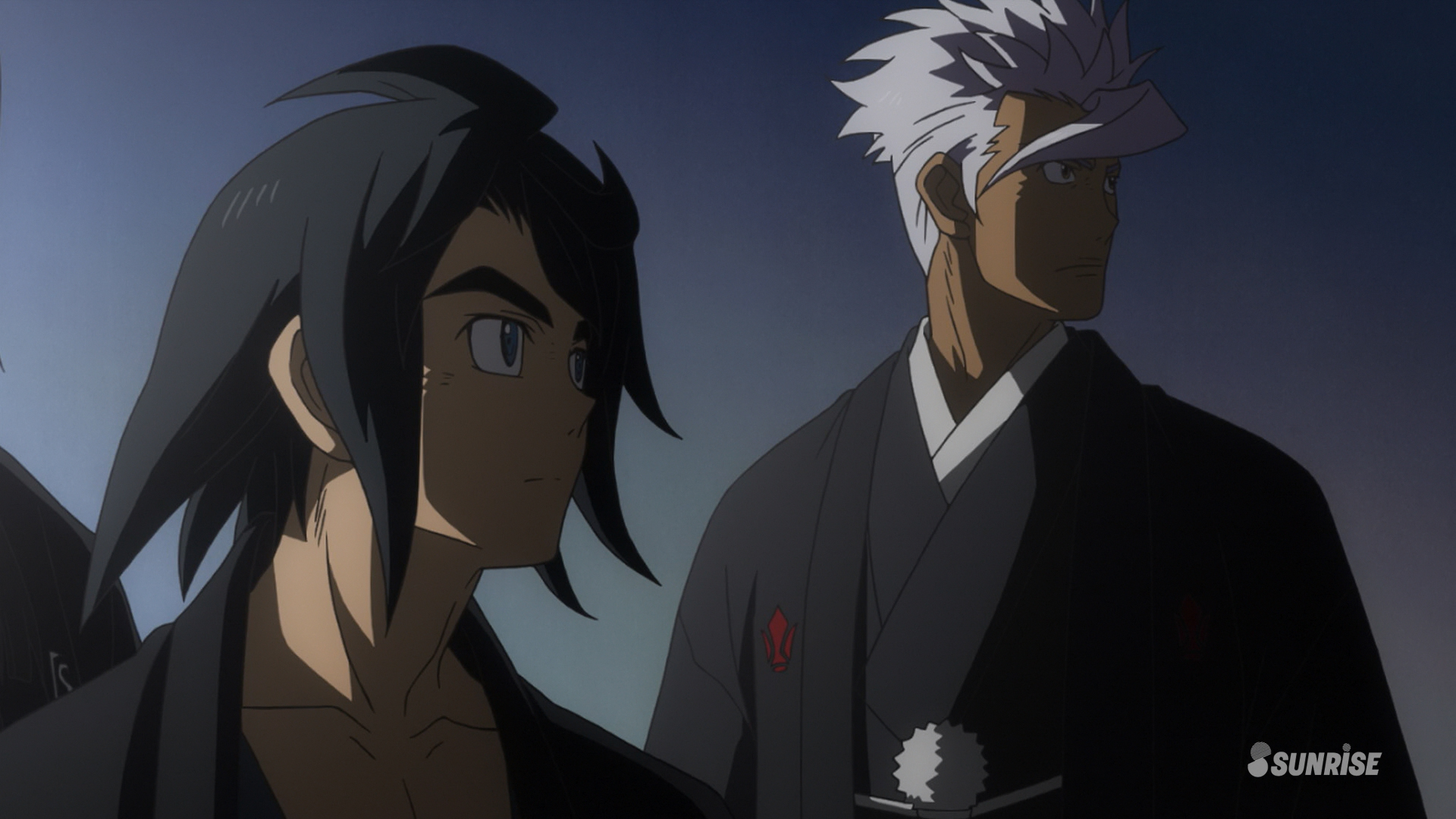
On the opposing side, things are a bit more mixed, as with the real villains of the piece being politicians in suits, it doesn’t seem to be able to do much with them other than give very stereotypical representations as they manipulate things in the background. Thankfully, Gjallarhorn’s main fighting force and its commanders, focusing around the trio of McGillis, Gaelio and Carta, as well as Ein and Crank, at least have a solid story of their own and distinctive character designs, even if one of them is your token Char clone.
It’s in the battles with Gjallarhorn in the second half of this set when things really come alive, however. While they lack the same kind of spectacle as other entries in the franchise with the gigantic laser beams of death missing, the change to a very physical form of combat makes these action sequences so much more brutal and impactful. Seeing crunched and mangled mobile suits that look as if they’ve come out of a car scrapyard has a different sort of impact from seeing them blown into pieces, and it allows for some rather gruesome imagery when certain characters get killed off.
With the fights being more physical, the animation has a lot more to answer for and Sunrise definitely delivers with some frenetic sequences that really convey the raw ferocity that they were going for.
It’s a shame, then, that the mecha designs feel lacking compared to other Gundam series, as apart from the few Gundam Frames we see, the standard combat mobile suits are very generic and don’t leave a lasting impression. The reliance on the mobile worker units in the ground-based fights also dampens things in this regard, despite how good the rest of the show looks. It’s all very much pinned around the Gundam Barbatos, which does look like an utter beast and it is clear why it’s one of the best-selling Gunpla model kits; however, I’d appreciate it more if a lot of the stuff it came up against didn’t look like your standard canon-fodder.
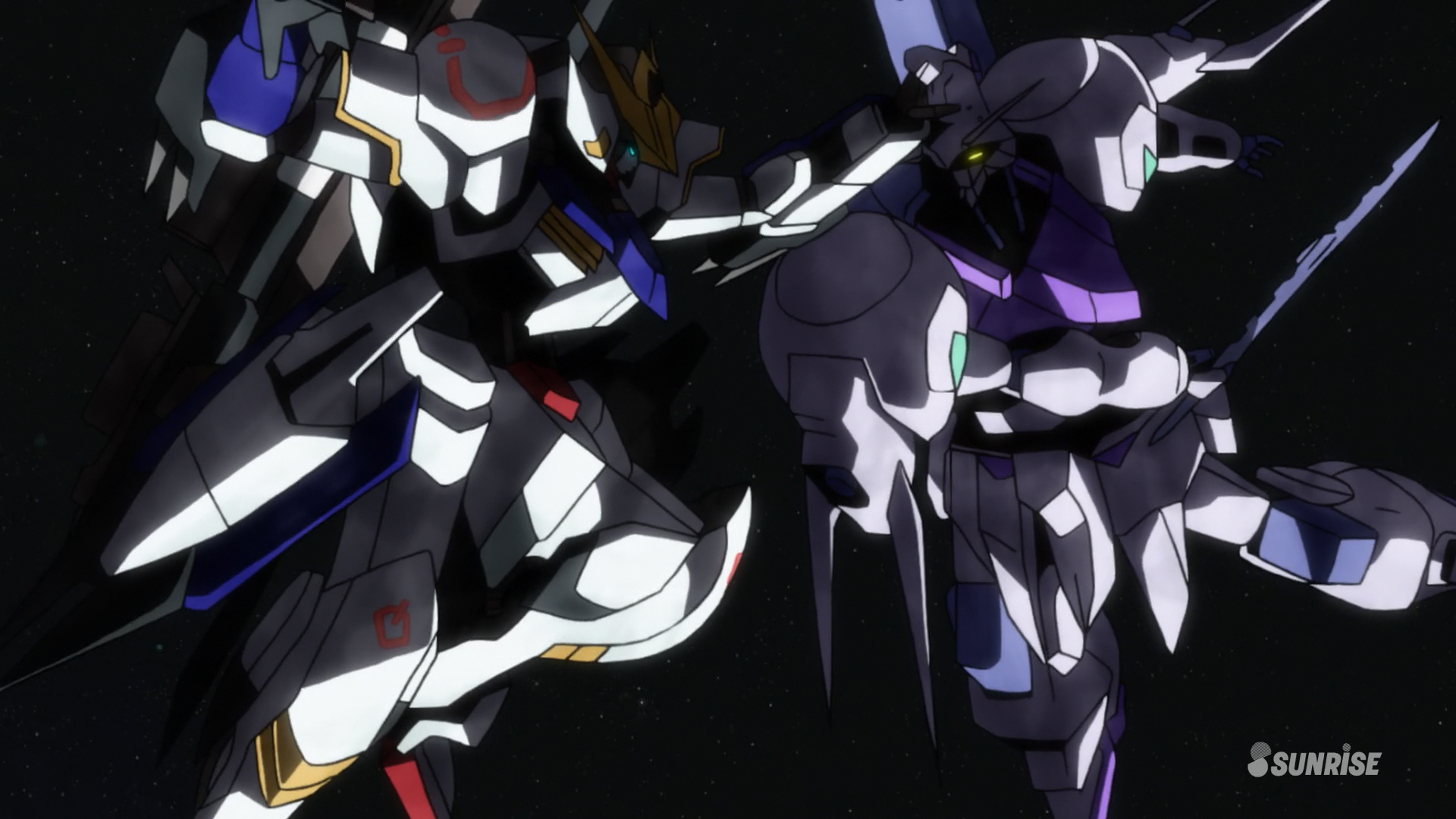
The show’s soundtrack, composed by Masaru Yokoyama, is very distinctive, being filled with a lot of aggressive, Spanish-influenced guitar and other western instruments, giving it plenty of atmosphere. It feels really set apart from the rest of the franchise, in particular looking at the modern Universal Century Sawano Hiroyuki soundtracks. And not to mention there’s that bombastic theme given to Tekkadan, which really gets you going.
It also boasts some fantastic opening and ending themes, with MAN WITH A MISSION really smashing it with one of their most popular songs, “Raise your flag”, while BLUE ENCOUNT’s “Survivor” is suitably aggressive for the more action-heavy second half. Meanwhile, MISIA’s “Orphans no Namida” and TRUE’s “STEEL -Tekketsu no Kizuna-” offer cooldowns from the action while retaining the emotional beats of the story.

Anime Limited’s release of this first half of the series features all 25 episodes across four discs, with the Amaray case packed into a collector’s box with space for the second half. It features both the Japanese subtitled version and the English dub, of which I certainly prefer the Japanese. While the English is certainly serviceable and features a high profile cast including Cherami Leigh (Kudelia), Johnny Yong Bosch (Orga) and Kyle McCarley (Mikazuki), the ADR direction and script is definitely not one of the best I’ve heard, with a lot of American turns of phrase and lines that sound just plain corny in their delivery, while the pronunciation of names doesn’t match up with the Japanese and doesn’t reflect how they’d be pronounced in their original language. The Japanese meanwhile always sounds consistent, with Yoshimasa Hosoya putting in a great performance as Orga, while I also enjoyed Kikuko Inoue’s performance as Carta. The subtitles here are largely fine, however they do clash with some on-screen text at times, while in some cases they are a literal translation of the Japanese and come across a bit awkwardly. There are no real extras to speak of apart from some trailers for some other shows on Discs 2 and 4.
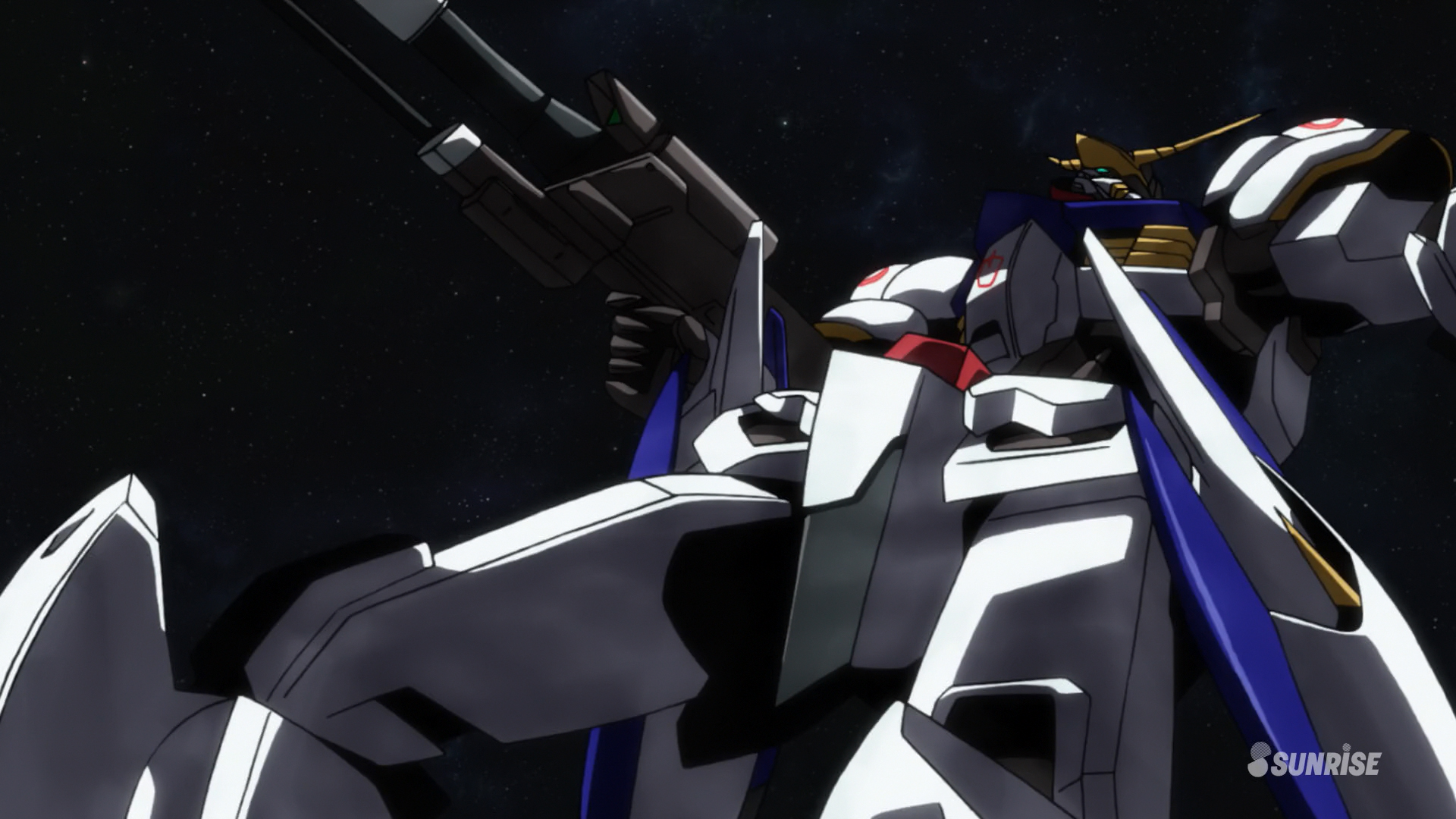
If you’re new to Gundam, Iron-Blooded Orphans offers a really strong starting point with a very unique and distinct take on the franchise which also offers something different for returning fans. It’s dark, gritty and realistic, with a well-constructed plot, a great cast of characters and some really exciting battles in its latter stages that really make use of the change to physical combat. However, to get there you do have to get past some very slow and involved political build-up and some slightly awkward romantic developments, while those here for the mobile suits will be disappointed with the lacklustre designs outside of the Gundam Frames. Overall, though, it stands as a really good entry in the franchise that does, in the end, live up to its name.


